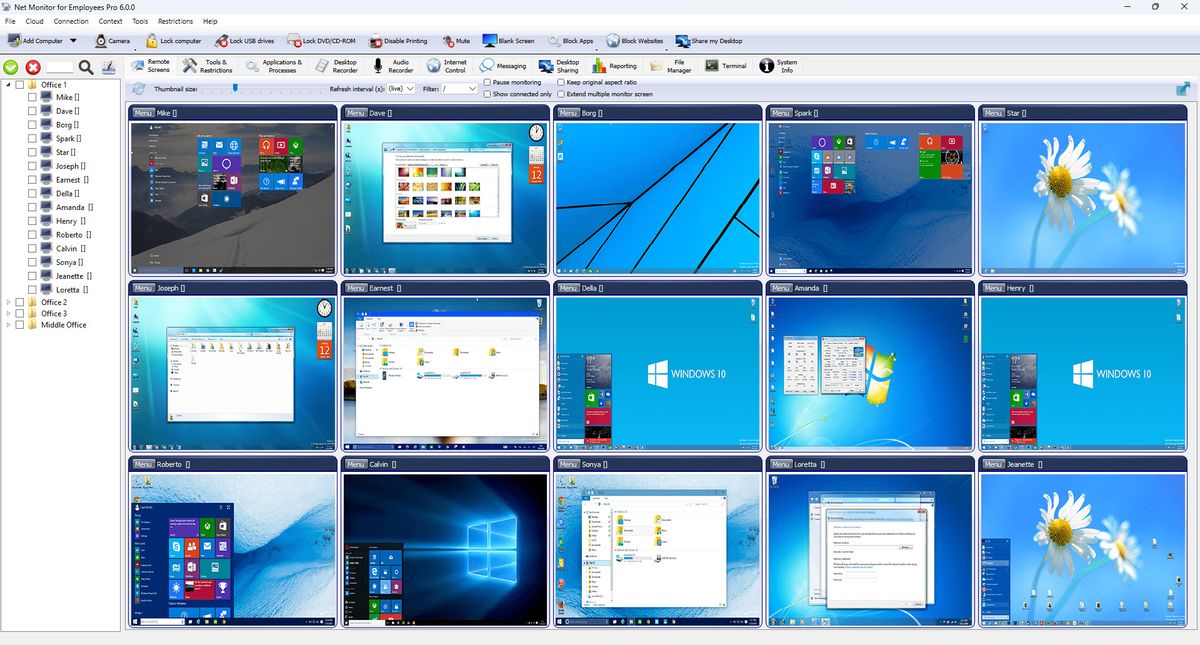
Employee monitoring software is a hot topic these days. Companies use it to keep tabs on productivity, security, and even compliance. But what exactly does this software do? Employee monitoring software tracks activities like website visits, application usage, and even keystrokes. It's not just about spying; it helps businesses understand work patterns and improve efficiency. Some folks worry about privacy, but many tools offer transparency features to keep everyone informed. Curious about how it works or what benefits it brings? Let's dive into 17 fascinating facts that will give you a clearer picture of this powerful tool.
What is Employee Monitoring Software?
Employee monitoring software tracks and records employee activities on company devices. It helps businesses improve productivity, ensure security, and manage remote workforces. Here are some interesting facts about this technology.
-
Origins in Time Clocks: Early employee monitoring began with mechanical time clocks in the late 19th century. These devices tracked when workers started and ended their shifts.
-
Diverse Features: Modern software offers features like keystroke logging, screen capturing, and email monitoring. These tools provide a comprehensive view of employee activities.
-
Remote Work Management: With the rise of remote work, monitoring software helps managers oversee productivity and ensure tasks are completed on time.
Benefits of Employee Monitoring Software
Understanding the advantages of using this software can help businesses make informed decisions about its implementation.
-
Increased Productivity: Monitoring tools can identify unproductive behaviors, allowing managers to address issues and improve overall efficiency.
-
Enhanced Security: By tracking activities, companies can detect and prevent data breaches or unauthorized access to sensitive information.
-
Accurate Time Tracking: Automated time tracking ensures employees are paid accurately for their work hours, reducing payroll errors.
-
Performance Evaluation: Data collected by monitoring software can be used to assess employee performance and identify areas for improvement.
Ethical Considerations
While monitoring software offers many benefits, it's important to consider the ethical implications of its use.
-
Transparency: Informing employees about monitoring practices fosters trust and ensures they understand the reasons behind the surveillance.
-
Privacy Concerns: Balancing monitoring with respect for employee privacy is crucial. Overly invasive practices can lead to dissatisfaction and decreased morale.
-
Legal Compliance: Companies must comply with local laws and regulations regarding employee monitoring to avoid legal repercussions.
Types of Employee Monitoring Software
Different types of monitoring software cater to various business needs. Here are some common categories.
-
Activity Monitoring: Tracks applications and websites employees use during work hours, providing insights into their productivity.
-
Email Monitoring: Scans and records email communications to prevent data leaks and ensure compliance with company policies.
-
Keystroke Logging: Records keystrokes to monitor typing patterns and detect potential security threats.
-
Screen Recording: Captures screenshots or video recordings of employee screens to review their activities in detail.
Challenges of Implementing Monitoring Software
Despite its benefits, implementing monitoring software can present several challenges for businesses.
-
Employee Resistance: Some employees may feel uncomfortable with being monitored, leading to resistance or decreased morale.
-
Data Management: Collecting and analyzing large amounts of data can be time-consuming and require significant resources.
-
Cost: High-quality monitoring software can be expensive, making it a significant investment for small businesses.
Final Thoughts on Employee Monitoring Software
Employee monitoring software has become a game-changer for businesses. It boosts productivity, ensures data security, and helps manage remote teams effectively. By tracking activities, companies can identify inefficiencies and provide targeted training. This software also helps in compliance with legal requirements, reducing the risk of costly fines.
However, it's crucial to balance monitoring with respect for privacy. Transparent communication about the use of monitoring tools fosters trust and cooperation among employees. Always ensure that the software is used ethically and within legal boundaries.
Incorporating employee monitoring software can lead to a more efficient, secure, and compliant workplace. Just remember, the key is to use it wisely and responsibly. With the right approach, both employers and employees can benefit from the insights and improvements it offers.
Was this page helpful?
Our commitment to delivering trustworthy and engaging content is at the heart of what we do. Each fact on our site is contributed by real users like you, bringing a wealth of diverse insights and information. To ensure the highest standards of accuracy and reliability, our dedicated editors meticulously review each submission. This process guarantees that the facts we share are not only fascinating but also credible. Trust in our commitment to quality and authenticity as you explore and learn with us.


